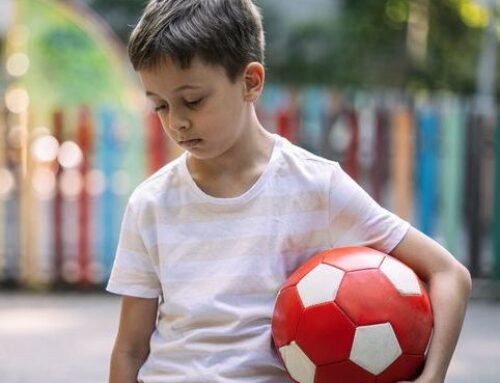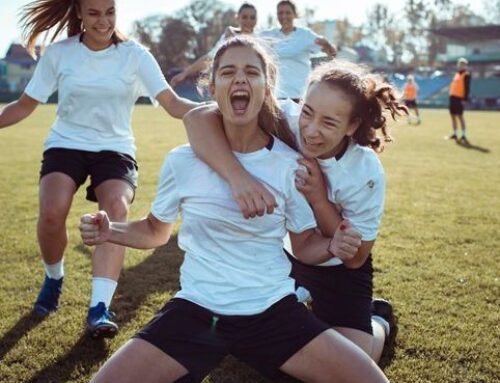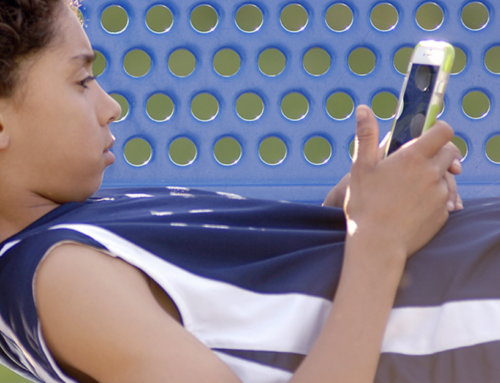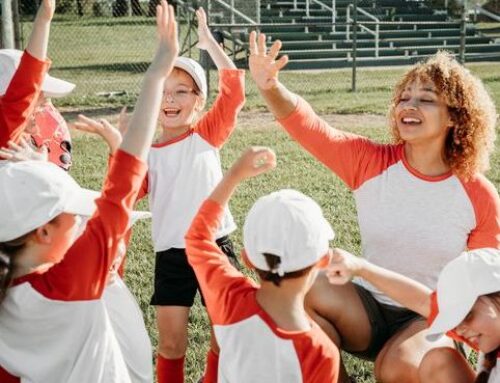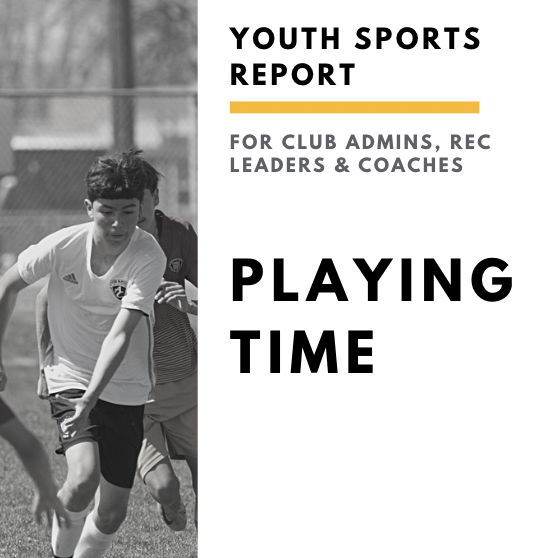Get our exclusive report. Download the iSport360 Club Switching Report Here – For Club Admins, Rec Leaders and Coaches.
Play Informed: Weighing the risks and benefits of youth sports during a pandemic
By Douglas J. Guth – appeared in MVP Parent on January 9, 2021
Youth sports bring boundless benefits to children and college-aged adults alike, from physical well-being to the socialization skills inherent in team-based competition. The ongoing coronavirus pandemic – already intertwined in most every aspect of our daily lives – has impacted the sports world as well, leaving young athletes wondering when and how they can safely resume their on-field endeavors.
Although the situation appears bleak, there are ways to keep athletes safer, according to experts who participated in a 3-part educational series, “Play Informed Sports and Recreation through the COVID-19 Pandemic.” Success against this invisible competitor, they explained, requires a combined effort from youth competitors, parents, coaches, and healthcare professionals.
MVP Parent publisher Rich Dubin moderated the 3-part discussion, comprised of professionals from the National Athletic Trainers Association (NATA), the American Academy of Pediatrics (AAP), and the American Medical Society for Sports Medicine (AMSSM). The sessions covered risks and safety precautions for returning participants, whether elite athletes or kids getting their first taste of competitive play.
Mitigating potentially deadly impacts means creating health and safety rules that everyone around a team agrees to follow, said Susannah Briskin, MD.
“You have to establish guidelines that everyone involved is aware of, then enforce those guidelines,” said Briskin. “You can put in place as many rules as you want, but if kids and parents aren’t following them, they won’t have an effect.”
Preparing for sports in this unprecedented time first requires understanding the dangers involved, said Shelley Fiscus, MD, FAAP.
“Low-risk sports are golf, running, and tennis – individual sports where there’s not much contact. The opposite side is wrestling or rugby. As a parent, you might want to focus on skill development rather than the full-bore scrimmage component.”
Margot Putukian, MD, FACSM, FAMSSM
Seven months is not nearly enough to truly comprehend the effects COVID-19 may have on young athletes, Fiscus explained. According to Centers of Disease Control data, about 250,000 children – from birth to age 17 – have tested positive for the virus, representing around 7% of total infections. As of July 2020, 6 of every 100,000 kids was hospitalized with COVID-19, while a modeling study in the Journal of Public Health and Management estimates 1 out of every 2,400 infected kids need intensive care.
Serious outcomes among youth are rare, but parents and coaches must consider children with pre-existing conditions, or those living in multi-generational households with medically vulnerable relatives.
“Understanding what to do is what we’re struggling with,” said Fiscus. “We also know sports are important in teaching teamwork, problem-solving and self-esteem. It’s a matter of striking a balance and doing this as safely as we can.”
Weighing the risks
The virus that causes COVID-19 is thought to spread mainly person-to-person through respiratory droplets. Droplets from a cough or sneeze can be inhaled into the lungs, with spread more likely when individuals are in close contact.
Margot Putukian, MD, FACSM, FAMSSM, said some sports simply have more inherent risk than others. Activities like golf encourage social distancing and have little in the way of shared equipment, while wrestling and football require direct interaction. Even swimming has its problems when swimmers pack together on a pool deck between races.
“Low-risk sports are golf, running, and tennis – individual sports where there’s not much contact,” said Putukian. “The opposite side is wrestling or rugby. As a parent, you might want to focus on skill development rather than the full-bore scrimmage component.”
Keeping athletes apart even in heavy-contact sports is possible. In soccer, coaches can concentrate on ball control or other conditioning drills. Meanwhile, football players may practice strictly within position groups to limit wider exposure.
During competition, athletes can lessen COVID-19 spread by changing on-field behaviors. It may be tradition for volleyball players to huddle up after a point, for instance, but such close contact is an invitation for infection.
“Not celebrating can take volleyball from a high-risk sport to moderate- or low-risk,” said Darryl Conway, MA, ATC. “This may change the culture of the sport, but these are the things that can be changed to reduce risk.”
Children who contract COVID-19 endure a less severe course of the disease than older people. However, infectious disease experts are still determining the long-term impacts of even mild or asymptomatic cases. Multisystem inflammatory syndrome in children, or MIS-C, is a very rare though dangerous outcome associated with the coronavirus that causes COVID-19. Myocarditis, an inflammation of the heart muscle that can lead to sudden heart stoppage with exertion, has been found in Big Ten College conference athletes and among several additional competitors in other conferences who have previously tested positive for COVID-19.
Making tough decisions
Teams are adapting rules set forth by the CDC – masking when social distancing isn’t possible, wiping down shared equipment or surfaces, frequent handwashing and more. Culture is a crucial component of any successful team, a mantra that holds true today for diminishing consequences of the virus.
“Instill a culture of not being a tough guy,” Conway said. “Stay home when sick and do the mitigation strategies. At practice, have a hand sanitizer break every 30 minutes. The culture around the team is what I’d look for as a parent.”
Panelists made clear that these precautions only lower COVID-19 risk, not erase it completely. But the manner in which teams respond to a positive case is indicative of future success in controlling virus spread. “See something, say something” should be the watchword for teams introducing pandemic protocol.
“If someone’s not following the rules, you can speak up,” said Briskin. “There has to be movement within the organization to be loud for the safety of athletes and parents.”
Mark Halstead, MD, said parents have their own role to play in protecting their kids.
“Parents don’t want to be the wet blanket, but they have to make those decisions, too,” Halstead said. “If you’re not feeling comfortable about your child participating, there’s probably a good reason for it.”
A true team effort
“Any kind of involvement that allows young athletes to maintain their identity as a competitor will help. It’s hard for both parents and kids when a season gets postponed or cancelled.”
Youth athletes advancing to the collegiate level are facing unique circumstances during the pandemic. On-campus populations must juggle athletics alongside academic and social pressures, with conferences including the PAC-12 and Big Ten postponing or cancelling their fall sport seasons.
Stephanie Chu, DO, a member of the NCAA COVID-19 Advisory Panel, said continuing uncertainty around virus transmission has proven too much for some administrators.
“The PAC-12 had a high prevalence of the virus which would require almost daily testing,” Chu said. “We don’t know about risks on the field yet. With cardiac issues [such as myocarditis, noted above], it became too risky to move forward at this time.”
Though games are cancelled, athletes at all levels aren’t necessarily retreating to their couches, said Drew Watson, MD, MS. Players can stay active via Zoom training or recruiting their parents as practice partners.
“It’s a big deal for kids to lose these sports, so we must set the context,” said Watson. “They can reconnect to how much they love learning new skills and abilities. These are the sort of things you don’t need a timeline for.”
Murphy Grant, MS, ATC, PEC, said the mental effects of a lost season take their own toll. A University of Wisconsin-Madison study found two-thirds of high-school athletes are experiencing depression and anxiety because of cancelled sports.
“We have to look at all aspects of being an athlete, including mental,” said Grant. “Sport takes a lot out of you, and (athletes) have an opportunity to talk to coaches about how they can improve. How can they watch film and find tendencies to get a competitive edge? The key is communication, even if you’re just talking about the upcoming season and how athletes thought it would be.”
As the COVID-19 pandemic isn’t ending anytime soon, it will take a true team effort to weigh the risks and benefits of youth sports, observed Rebecca Lopez, PhD, ATC, CSCS.
“Any kind of involvement that allows young athletes to maintain their identity as a competitor will help,” Lopez said.
“It’s hard for both parents and kids when a season gets postponed or cancelled.”
While the experts agreed that COVID-19 is a once-in-lifetime competitor, they also agreed that it is possible to keep youth athletes enjoying the benefits of sports, as long as coaches, parents, and players work together to mitigate the risks.
Douglas J. Guth is a freelance writer in Cleveland, Ohio. Published by MVP Parent.

Learn more or request a demo of our youth sports software that is helping teams improve communication, organization and player development.
February 14, 2021

